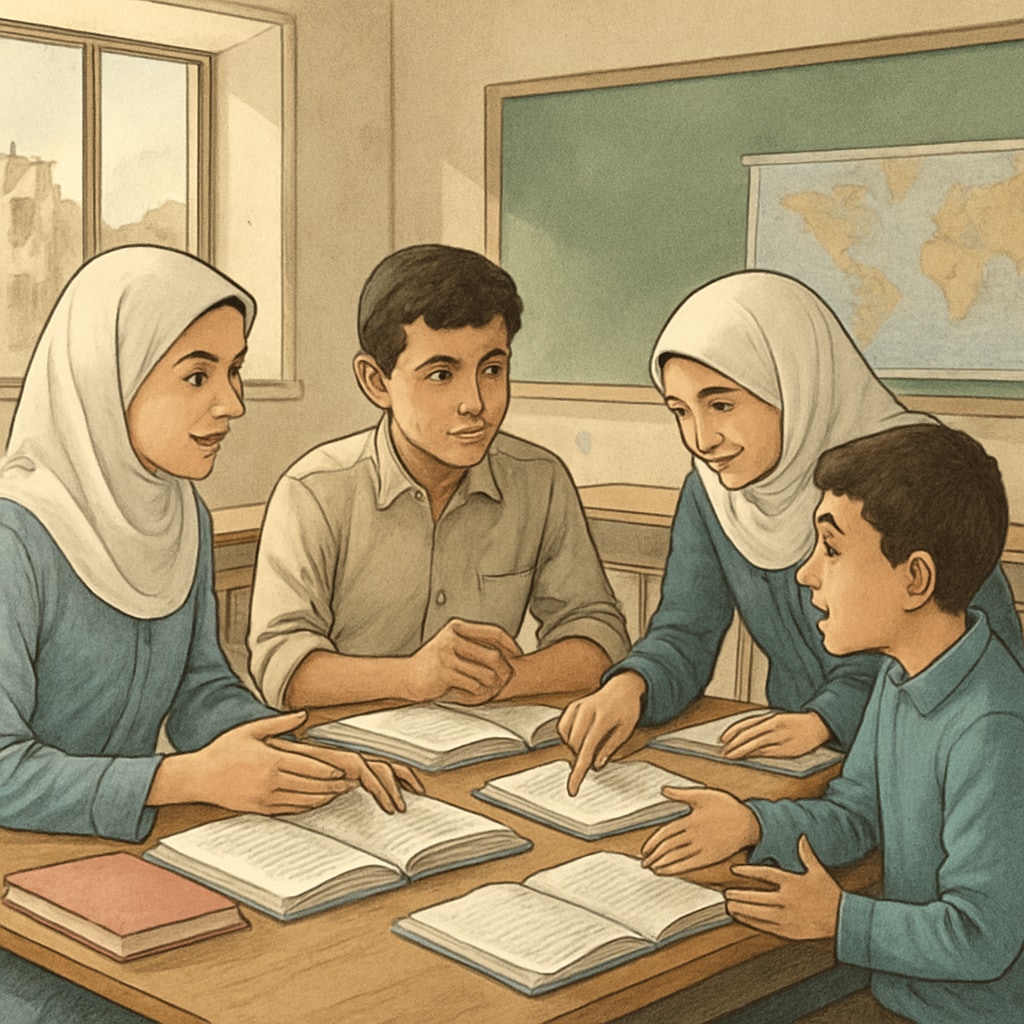The development of a robust curriculum is critical for post-conflict regions like Gaza, particularly in the fields of science and social studies. Crafting a teaching framework that respects local culture while aligning with international standards is essential for fostering long-term stability and growth. This article examines the key principles and challenges in designing effective curricula for Gaza schools, focusing on the disciplines of science and social studies.
Understanding the Needs of Gaza’s Education System
Rebuilding Gaza’s education system after years of conflict requires a comprehensive understanding of the region’s unique circumstances. Schools in Gaza face numerous challenges, including damaged infrastructure, limited resources, and disrupted learning. Social and political tensions further complicate the design of inclusive and forward-looking curricula.
Science and social studies are foundational subjects that address both practical and civic education needs. Science equips students with critical thinking and problem-solving skills, while social studies foster an understanding of history, geography, and cultural diversity. A well-designed curriculum in these areas can help promote resilience and mutual understanding among young learners.

Principles for Designing Science and Social Studies Curricula
Developing curricula for Gaza schools requires balancing several key principles. Below are some recommendations:
- Cultural Relevance: Materials should reflect Gaza’s history, values, and traditions to ensure students feel connected to their learning.
- International Standards: The curriculum should align with global benchmarks to provide students with opportunities for higher education and career development.
- Inclusivity: Educational content must be accessible and sensitive to diverse cultural and religious backgrounds within Gaza.
- Peace Education: Social studies curricula should emphasize conflict resolution, empathy, and collaboration to foster a more harmonious society.
- STEM Integration: Science education should prioritize hands-on experiments and real-world problem-solving to inspire innovation.
By adhering to these principles, educators can create curricula that prepare students for success while contributing to the broader goal of social cohesion and recovery.

Overcoming Challenges in Curriculum Implementation
While the theoretical framework for a curriculum may be strong, its implementation in Gaza faces practical hurdles. Limited access to modern teaching materials and technology is a significant barrier. Additionally, teachers need adequate training to deliver new curricula effectively.
Collaboration with international organizations can help address these challenges. For example, UNESCO provides resources and expertise for post-conflict education systems. Similarly, partnerships with universities and NGOs can ensure that Gaza schools have access to updated teaching tools and teacher training programs.
In addition, community involvement is crucial for the success of any curriculum. Engaging parents, local leaders, and students in the development process can ensure the curriculum is relevant and widely accepted.
Looking Ahead: The Role of Education in Gaza’s Future
Education plays a pivotal role in rebuilding societies after conflict. A well-crafted curriculum in science and social studies can help shape a generation of critical thinkers and responsible citizens. By embracing both local traditions and global perspectives, Gaza’s schools can provide students with the tools they need to thrive in a rapidly changing world.
While challenges remain, the opportunity to rebuild Gaza’s education system represents a chance to create a brighter future for the region. By prioritizing inclusivity, innovation, and collaboration, educators and policymakers can lay the foundation for sustainable development and peace.
Readability guidance: The article uses short paragraphs and lists to enhance readability. Transition words like “in addition” and “for example” are used throughout to ensure logical flow. Images are placed at key points to support the text visually.


